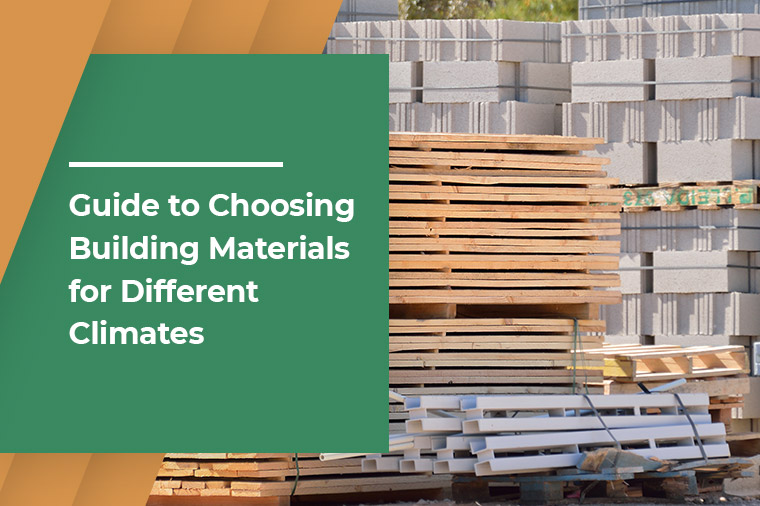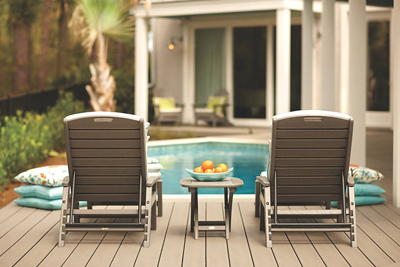Guide to Choosing Building Materials for Different Climates

To All Our Valued Customers, Over the past few years, the Covid 19 Pandemic has forced us to adapt and change the way we do things on a day-to-day basis. Florida Lumber is no exception. To make sure that we remain strong and competitive in the market for the years to come, Florida Lumber has had to adjust and change our vision for the future. In the last 2 years, we have stopped selling Sheetrock and drywall products, roofing felt and roofing materials, and have even closed on Saturdays.
Over the last few months, we have been transitioning our way out of the door supply business so on August 31, 2022, our door shop will stop assembling doors. We will continue liquidating our doors from inventory until we are out of material.
Some customers have asked if we are closing or even moving locations. To set the story straight, we are not closing or selling the business and we are not moving. These changes are all part of our new vision and path to continue serving South Florida and increasing our footprint in the construction supply industry.
Our focus is going to be on Lumber, Construction Materials, Rebar Fabrication and Rebar Accessories. As we have liquidated some of the items that we don’t sell anymore we have created more space to buy a larger volume of our core items and pass on the savings to our customers.
In the next year you will start seeing changes that will help improve our ability to serve you, our customers. We appreciate your business and your patience as Florida Lumber’s new vision becomes reality.
A Todos Nuestros Valiosos Clientes En los ultimos anos, la pandemia de el Virus (Covid 19) nos ha forzado a adaptarnos y cambiar la forma de hacer cosas en el dia a dia. Florida Lumber no ha sido una excepcion.
Para asegurarnos de mantenernos fuertes y competitivos en el mercado en los anos venideros, Florida Lumber ha tenido que ajustar y cambiar nuestra vision para el futuro. En los dos ultimos anos hemos dejado de vender los productos de yeso (sheetrock), paneles de yeso (drywall), tela asfaltica (roofing felt), materiales de techo y cerramos los Sabados. En los ultimos meses, hemos estado en transicion para salir del negocio de suministro de puertas, en Agosto 31, del 2022 nuestra tienda de puertas dejara de construir y/o cortar puertas. Vamos a continuar liquidando nuestro inventario de puertas haste que terminemos todo el material. Algunos de nuestros clientes han preguntado si estamos cerrando o si nos estamos moviendo a otra localidad. La verdad es que no estamos cerrando, no estamos vendiendo y no estamos cambiando de localidad. Estos cambios son todos parte de nuestra nueva vision y camino a continuar sirviendo al estado sur de la Florida y incrementar nuestras huellas en la industria de suministros de construccion.
paneles de yeso (drywall), tela asfaltica (roofing felt), materiales de techo y cerramos los Sabados.
En los ultimos meses, hemos estado en transicion para salir del negocio de suministro de puertas, en Agosto 31, del 2022 nuestra tienda de puertas dejara de construir y/o cortar puertas.
Vamos a continuar liquidando nuestro inventario de puertas haste que terminemos todo el material. Algunos de nuestros clientes han preguntado si estamos cerrando o si nos estamos moviendo a otra localidad.
La verdad es que no estamos cerrando, no estamos vendiendo y no estamos cambiando de localidad. Estos cambios son todos parte de nuestra nueva vision y camino a continuar sirviendo al estado sur de la Florida y incrementar nuestras huellas en la industria de suministros de construcción.
2431 N.W. 20TH ST.
MIAMI, FL 33142
PHONE: (305) 635-6412
Sales Fax: (305) 633-4054
Accounting Fax: (305) 635-3723
Email: sales@tloridalumber.com

We all know how warm, cozy and special our homes can be for us. It’s the pace we can freely relax and make a great amount of memories in. The importance of building a durable home that is safe is significant. This is why it is imperative you are careful when selecting the building materials for your home, to ensure that it protects those in it. Building materials are anything used towards the construction of the structure. Continue reading our guide that aims to help you feel confident and knowledgeable the next time you decided to make a building material purchase towards your home.
How to Select Building Material?
Selecting the right type of building material is not only important for the durability of a building but it is equally important for the safety of the residents that reside in it. You may even need to consider energy-efficiency building materials. The following points may help you make a judicious decision with regard to the building materials.
A) Analyzing a Region’s Climate
The climatic conditions may severely impact the durability of the building materials. For example, the City of Miami has a humid climate; the temperature can reach up to as high as 32°C in the summer and as low as 15°C in the winter. On several occasions, you may even witness a variety of short rainfall spells, heavy showers, and even major thunderstorms. The fluctuations in temperature and humidity can cause wooden materials to expand and contract in size. However, this can surely be prevented using waterproof colors or paint sealants.
On the other side of the spectrum, your house may even be located near a forest/plantation. In this scenario, consider using fireproof construction materials in case wildfires are common in this locality.
The climatic conditions may even greatly influence your decision with regard to the selection of building materials.
B) Longevity
It is consequentially important to consider the longevity of the building materials during this selection. You have to ensure that the selected materials can withstand the temperature, humidity and other climatic elements of the location for a long period of time without requiring any repairs. You may even need to consider if the selected material puts your property as well as the inhabitants, at risk of a possible hazardous event.
Concrete is considered to be a safe building material due to its ability to withstand the changes in climatic conditions without any degradation. Concrete can also resist fire-related accidents stronger than wooden building material. It is possible to avoid frequent maintenance issues if you select concrete as the building material for your house.
Concrete is usually mixed with other quality construction materials, such as stones, bricks or cement. This type of amalgamation increases the durability of the building material and even makes it weatherproof. Therefore, the structural foundation of your home will not crumble regardless of the weather type (hot/humid/chilly) if you use this type of building material.
C) Energy Efficiency
When building your home, you have the opportunity to use energy-efficient materials. For example,
• You may use the ‘spray-foam’ as the material used for insulation instead of using the fiberglass/cellulose insulation. It can keep the conditioned air inside the rooms for longer, which then saves the HVAC system from overworking as well as saving electrical energy.
• You may even use the ‘thermostat radiant barrier’ sheathing to prevent excessive penetration of heat.
• The bamboo plywood is another energy-efficient construction material for the floors and other areas.
Different Types of Building Materials
Today we see a wide variety of building material choices such as wood, concrete, clay, stone, and others. However, the suitability of building material should depend entirely on the climate of the location.
• Materials with insulating properties, such as bricks/stone/concrete, are best for colder regions.
• Wood/clay is an ideal construction material for warmer regions. These materials can keep the interior temperature cooler than other materials and let the rooms breathe.
• Tinted glass is also used as the construction material these days.
This is an unconventional, but unique choice. It is prudent to consult with a professional before selecting the Building Materials in Miami, as we can help you select the best construction material for your house. Wait no more, contact now!!!!

